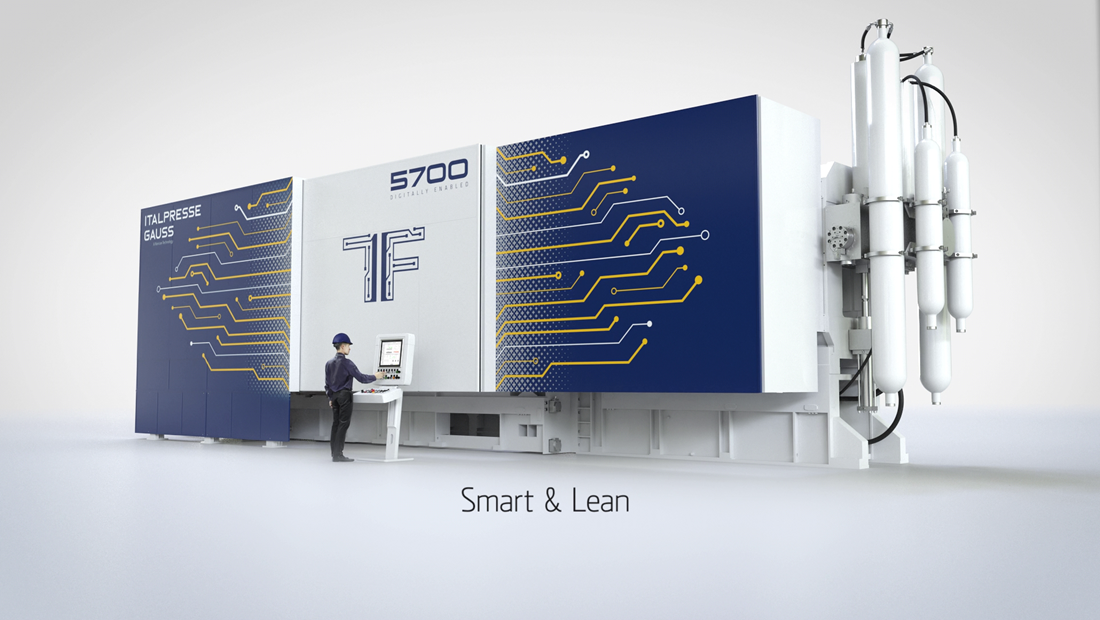The compact Toggle Free solution
ItalPresseGauss offers deliberately compact, digitally-enabled toggle-free HPDC machines I with rigid, tight, closing units and a range of clamping forces from 1000 to 5700 tonnes – delivering the advantage of greater force and larger platens, without taking up additional space on the foundry floor.

Consider fully automated cells
Saving precious space while boosting productivity and production flexibility is also
desirable to cope with the sheer diversity of parts now sought in aluminium. It’s
a challenge well-met by fully automated solutions employing high pressure, low
pressure and gravity die casting technologies.
As well as tightly coupling the dosing, injection and casting extraction process,
casting cell automation can be extended to handle ancillary tasks like metal
pouring, die lube spraying, liner insertion, part extraction and marking – all
depending on specific needs.
Together with the opportunities presented by sophisticated digital monitoring and
process optimising solutions (see Section 4) this end-to-end approach can make aluminium die casting faster while at the same time eliminating scope for error.
The complete aluminium foundry
ItalPresseGauss’ automated work cells are designed to optimise cycle time and stability for improved quality casting with less energy wastage, and to seamlessly integrate periphery equipment such as StrikoWestofen’s Westomat dosing furnace.
The Westomat requires just a third of the energy consumed by automatic ladle systems while also reducing metal loss by about 80% compared to a holding furnace.
After casting, comes surface preparation.
Green Sand for Aluminium
It’s not just die-casting foundries that can benefit from a zero waste, zero defect approach to aluminium casting. A wealth of opportunities are available to green sand foundries seeking to streamline their operations.
Speak to DISA for advice on optimising aluminium green sand casting, whether using gravity pouring or low pressure pouring and whatever your production volume and velocity.

